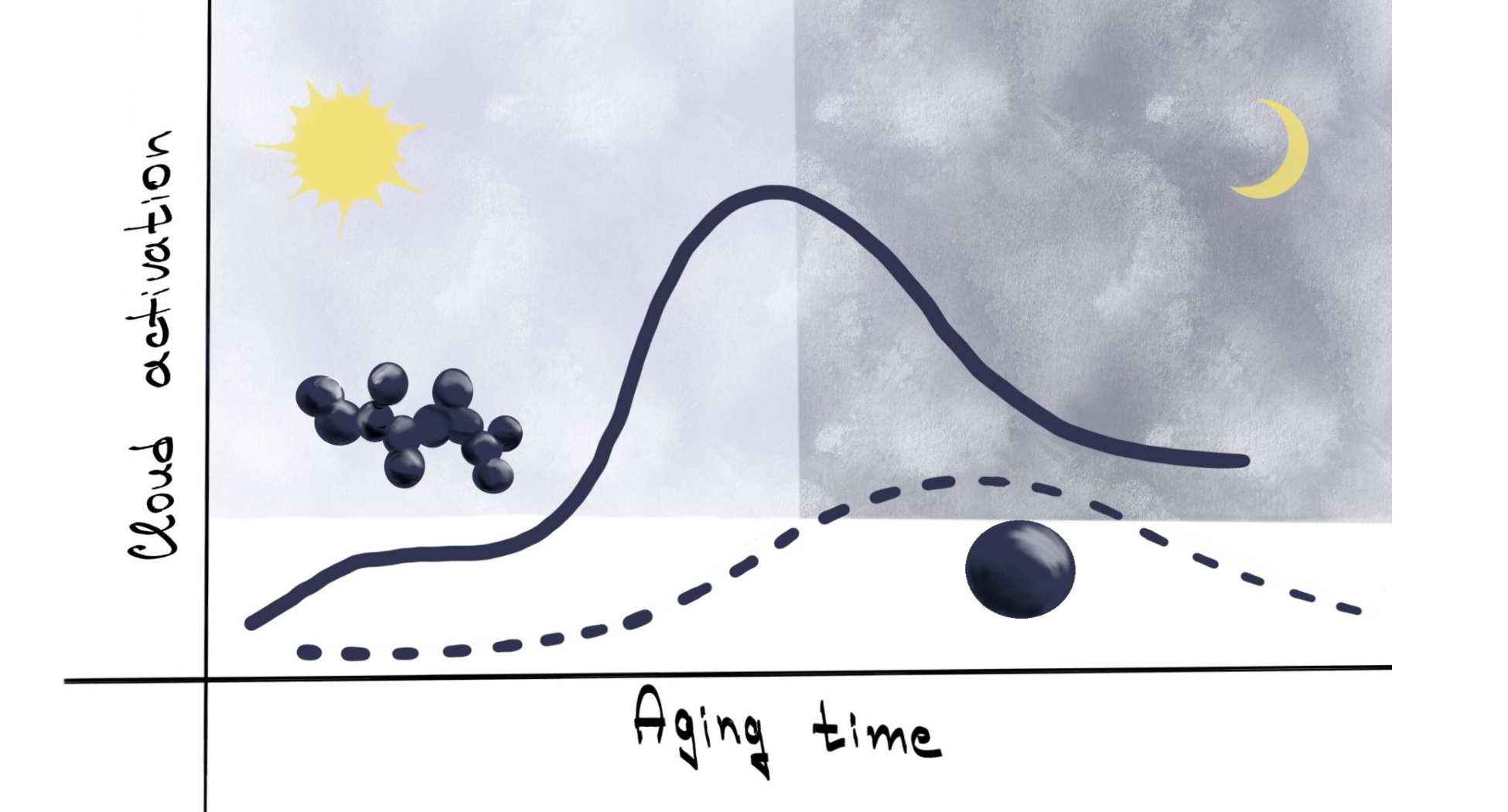Capillary Condensation: An Unaccounted Pathway for Rapid Aging of Atmospheric Soot
Alexei F. Khalizov, Ella V. Ivanova, Egor V. Demidov, Ali Hasani, Jeffrey H. Curtis, Nicole Riemer, Gennady Y. Gor
Environmental Science and Technology, 2025

Abstract
Soot is a short-lived climate forcing agent whose warming potential varies significantly during its atmospheric lifetime. The particles of soot have a complex fractal morphology, but in atmospheric aerosol models, they are commonly represented as spheres. We show that taking the fractal morphology into consideration significantly accelerates the rate of aging of soot aerosol in the atmosphere because concave surfaces in fractal particles promote rapid capillary condensation of trace gas chemicals produced from the photochemical oxidation of volatile organic compounds, even when vapors of such chemicals are subsaturated. Our results suggest that, by capillary condensation alone, these chemicals can transform hydrophobic soot particles into cloud condensation nuclei within a few hours. Additionally, capillary condensation induces the compaction of fractal soot even at a moderately elevated relative humidity, changing its transport and optical properties. Representing an important mechanism of atmospheric aging, capillary condensation has a profound effect on the evolution of direct and indirect climate impacts of soot at a higher rate than previously recognized, and hence, it must be incorporated into atmospheric aerosol models to improve their predictive power.
Full text link
https://doi.org/10.1021/acs.est.5c00633
Citation